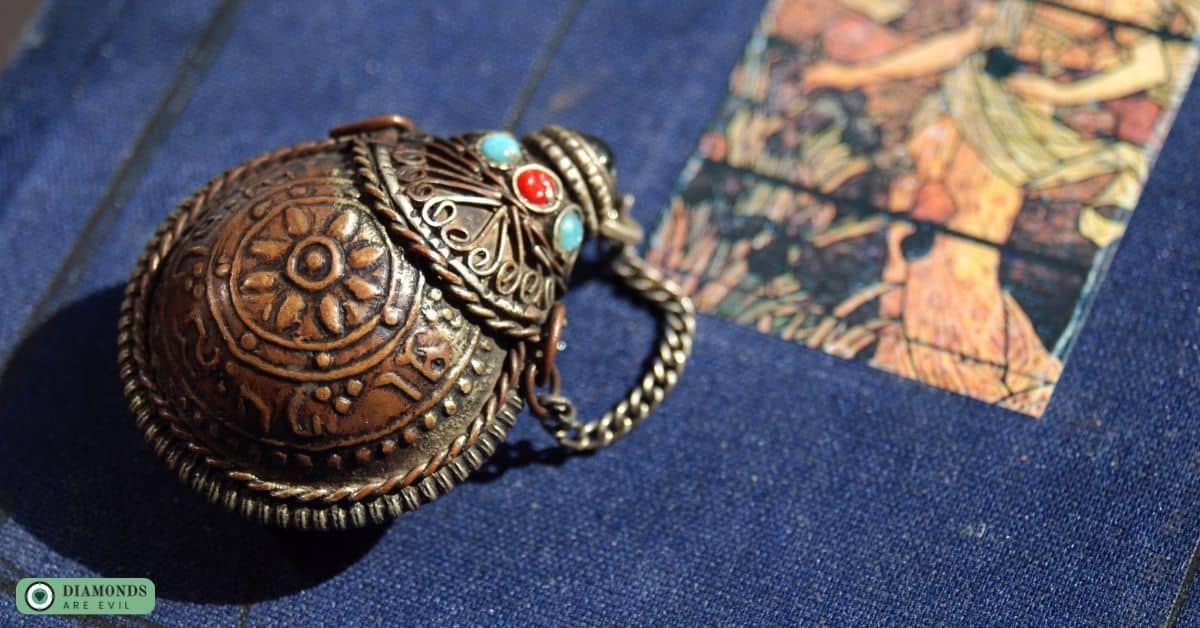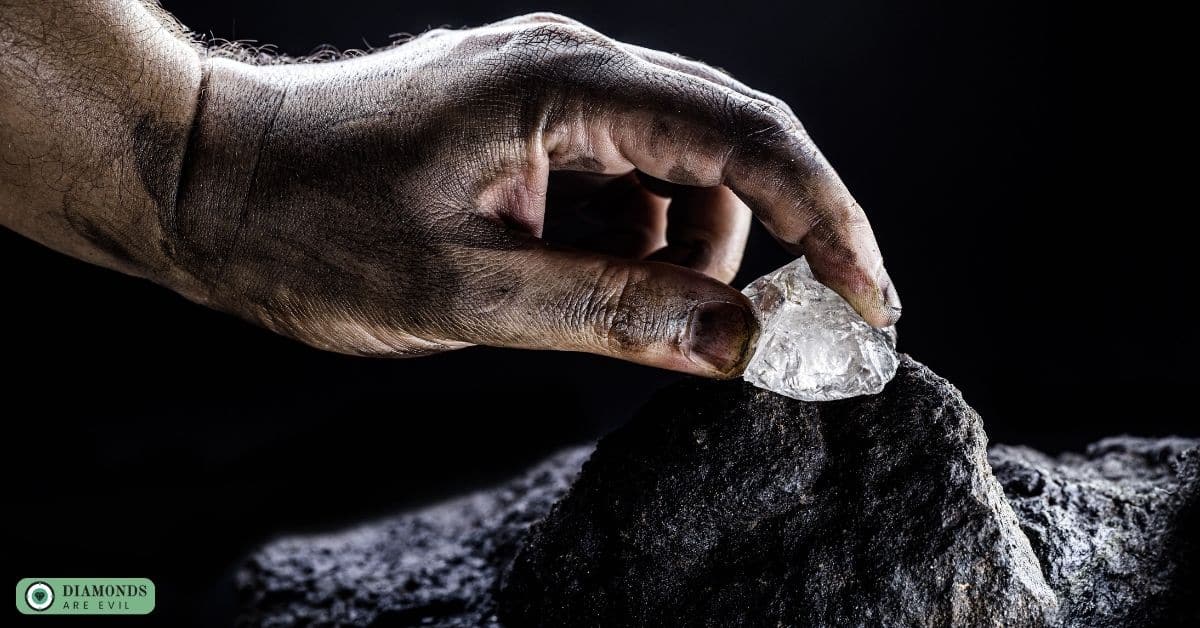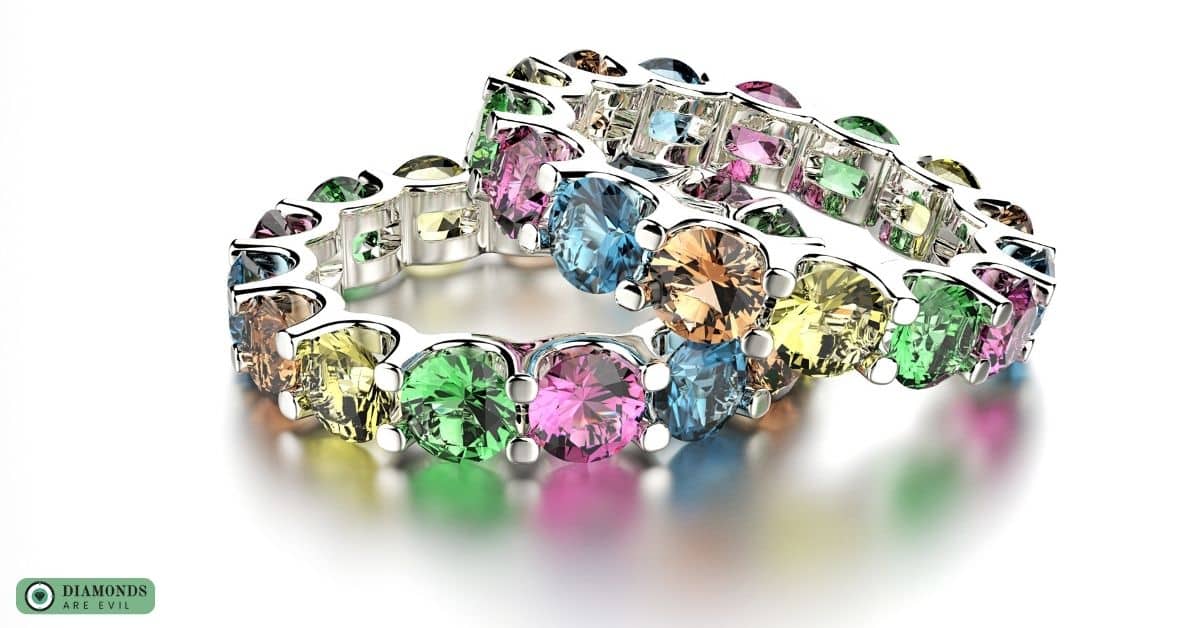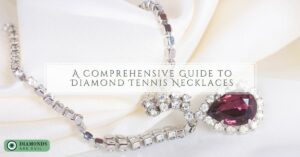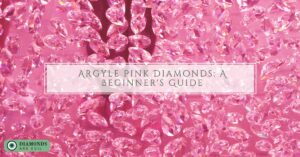Diamonds’ enduring popularity is due to their rarity, mystique, and De Beers’ marketing campaigns. The industry faces sustainability and competition challenges, as ethical production becomes important to consumers. Nevertheless, diamonds’ allure is likely to continue.
In this blog post, we’ll explore the sparkling story of how diamonds became a symbol of love and luxury, as well as the impact that mining techniques, cultural shifts, and sustainability concerns have had on their modern popularity. So, let’s dive in and explore the captivating history of diamonds!
The Early Roots of Diamond Fascination
Diamonds have been treasured and admired for centuries, with early evidence of their use dating back to ancient India in the 4th century BCE. During this period, Indian aristocracy and royalty were particularly taken with the stones, which they believed had supernatural powers and were associated with various deities.
Middle Ages
Diamonds were still primarily used for religious art and adornment. They were also used as talismans to ward off evil spirits and protect the wearer from harm.
Renaissance Period
Diamonds were appreciated for their beauty and cutting techniques were refined to enhance their brilliance and fire. The diamond trade was centered in Antwerp, Belgium, and diamonds became a highly sought-after luxury item among the wealthy elite.
17th Century
Diamond mining began in Brazil, which quickly became a major source of diamonds. Diamonds were still primarily owned by royalty and the aristocracy, but they also began to be used as engagement rings among the upper class.
19th Century
The diamond rush in South Africa led to a surge in diamond mining and increased the supply of diamonds, making them more accessible to the middle class. However, diamonds were still primarily viewed as a luxury item for the wealthy.
20th Century
The De Beers Group became the dominant force in the diamond industry by controlling both the mining and distribution of diamonds. Through strategic marketing and supply chain control, they positioned diamonds as the ultimate symbol of love and commitment.
Throughout history, diamonds have been associated with power, wealth, and prestige, and their popularity has continued to grow into the modern era. However, their origins as symbols of divinity and mystical power in ancient India demonstrate the deep roots of fascination with these sparkling gems.
How Marketing and Myth-Making Helped Diamonds Become a Symbol of Love and Luxury
For centuries, diamonds have been admired for their beauty and rarity. However, it wasn’t until the late 19th and early 20th century that diamonds became a symbol of love and luxury. This transformation was largely due to the brilliant marketing and myth-making efforts of the diamond industry, particularly those of De Beers.
De Beers’ savvy advertising campaigns created an illusion of scarcity and exclusivity, convincing consumers that diamonds were the ultimate symbol of love and commitment. The iconic slogan “A Diamond is Forever” became synonymous with romance and forever changed the way we think about diamonds.
This powerful marketing and myth-making created a strong emotional connection between diamonds and love, cementing their place as the ultimate luxury item.
The Impact of Diamond Discoveries and Mining Techniques on Popularity and Accessibility
The discovery and mining of diamonds have had a significant impact on the popularity and accessibility of these precious gems. With the use of innovative mining techniques, diamonds can now be extracted from even the most remote areas. This has increased the availability of diamonds, making them more popular and accessible to people around the world.
Open-pit Mining
Involves removing the top layer of soil and rock to access the diamond-bearing ore below. This technique is commonly used in large-scale diamond mining operations.
Alluvial Mining
Involves digging and sifting through sediment in riverbeds, often with the use of equipment such as sieves and shovels. This technique is used to extract diamonds from river and stream deposits.
Underground Mining
Involves tunneling beneath the earth to reach diamond deposits that are too deep for open-pit mining. This technique is typically used for high-value diamonds and is more costly than open-pit mining.
Marine Mining
Involves extracting diamonds from the ocean floor. This technique uses specialized ships equipped with dredging equipment to collect diamond-bearing sediment from the seabed. Marine mining is a relatively new technique and is only used in a few locations around the world.
Cultural Shifts and Changing Attitudes Towards Diamond Ownership in the 20th Century
The 20th century saw a significant cultural shift in attitudes towards diamond ownership. Once exclusive to the wealthy elite, diamonds became more accessible to the general public as marketing campaigns by diamond producers emphasized the symbolism of love and commitment associated with the gemstone.
However, in recent years, there has been a shift away from the traditional value placed on diamond ownership. As society becomes more conscious of the ethical and environmental concerns surrounding diamond production.
Consumers are seeking alternative options such as lab-grown diamonds or vintage and antique pieces. This shift in attitude reflects a growing desire for ethical and sustainable consumption in modern society.
The Rise of Alternative Gemstones and Sustainability Concerns in the Modern Era
In the modern era, the popularity of alternative gemstones has risen as consumers seek more sustainable and ethical alternatives to diamonds. Gemstones such as moissanite, lab-grown diamonds, and colored gemstones like sapphires, rubies, and emeralds are becoming increasingly popular as engagement rings and jewelry options.
Sustainability concerns have also led to increased interest in ethical and sustainable diamond production. The environmental impact of diamond mining and the exploitation of workers in the industry have prompted calls for greater transparency and accountability in the diamond supply chain.
To address these concerns, organizations such as the Responsible Jewellery Council have been established to promote ethical and sustainable practices in the jewelry industry. The Kimberley Process Certification Scheme, established in 2003, is a global initiative aimed at preventing the trade in conflict diamonds, also known as blood diamonds.
In conclusion
Diamonds have captivated the hearts and minds of people for centuries. From ancient Indian beliefs about their supernatural powers to modern views of them as symbols of love and commitment, diamonds have a rich history that has shaped their place in society today.
The discovery and mining techniques used to access these precious gems, along with strategic marketing campaigns, have changed the way we think about diamonds and their importance in our lives.
With increasing awareness of ethical and environmental concerns surrounding diamond production, there is a growing demand for alternative gemstones and sustainable sources of diamonds. Whatever your relationship with diamonds may be, their allure will undoubtedly remain timeless.


